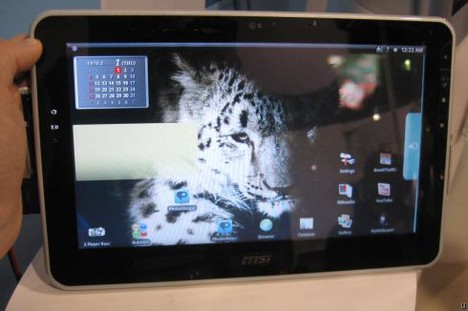The dual processor for mobile and other different laptop ends with the arrival of the tablet. Each type of processor excels in one aspect, so the dilemma is to decide the most suitable for a hybrid device like the tablet between laptop and smartphone. There are two broad classes of processors: those based on x86 and ARM.
All desktops, laptops and servers run many x86 processors made by Intel or AMD. Macs are also based on x86 since Apple switched to Intel in 2006. Smart phones and many electronic devices, however, are based on the ARM architecture. Symbian operating system, Android, Windows Phone and iPhone and BlackBerry working on ARM processors manufactured by Qualcomm, Renesas, Samsung, ST, Conexant or nVidia, little known firms because they have not worried as Intel to enhance the brand image a processor, but are equally important.
This parallel development of both architectures is explained because they give priority to different aspects. The x86 architecture is suitable for many internally process data while the ARM is ideal for data communication with the outside world with little power consumption. In the era of PC and mobile phones had no problem, each machine had its processor.
In the current era of Internet and multimedia, communications and data processing and graphics are key in both a laptop and a smartphone. And in a hybrid device like a pocket PC or tablet even more, bringing the conflict to the choice of being served. There is no ideal solution, with dozens of products on the market is difficult for a concept to flourish.
Every two years, placed twice as many transistors or basic elements of information in the same area of silicon or chip. The level of integration is now so high that not only all the data processor is within a single chip but also includes a buffer memory and graphics throughout the process, which is what Intel and AMD recently announced.
By putting so much into such a tiny chip reduces the number of elements and size, and optimizes its performance because the data do not have to go in and out of different components. On smartphones has been the same: the modem, which is the basic component of communications, has been integrated with data and graphics processor on a single chip, increasing its capacity and minimal power consumption.
Integration in both cases is so optimized that the basic strengths of both architectures are now very blurred. You can make a full notebook with the ARM architecture and a smartphone with the x86. In fact, when Intel wanted to enter the mobile developed a specific ARM architecture, but five years ago realized the potential of the x86 and was abandoned.
The Intel Atom platform is based on x86 and serves to mini-notebooks, tablet or television consoles, as noted by Antonino Albarran, Intel specialist Spain. Intel announced the second generation of Core processors, i3, i5 and i7 more capable integrated graphics, among other things. So did the family AMD Fusion, which does not distinguish between data processing and graphics, everything is connected. 


All desktops, laptops and servers run many x86 processors made by Intel or AMD. Macs are also based on x86 since Apple switched to Intel in 2006. Smart phones and many electronic devices, however, are based on the ARM architecture. Symbian operating system, Android, Windows Phone and iPhone and BlackBerry working on ARM processors manufactured by Qualcomm, Renesas, Samsung, ST, Conexant or nVidia, little known firms because they have not worried as Intel to enhance the brand image a processor, but are equally important.
This parallel development of both architectures is explained because they give priority to different aspects. The x86 architecture is suitable for many internally process data while the ARM is ideal for data communication with the outside world with little power consumption. In the era of PC and mobile phones had no problem, each machine had its processor.
In the current era of Internet and multimedia, communications and data processing and graphics are key in both a laptop and a smartphone. And in a hybrid device like a pocket PC or tablet even more, bringing the conflict to the choice of being served. There is no ideal solution, with dozens of products on the market is difficult for a concept to flourish.
Every two years, placed twice as many transistors or basic elements of information in the same area of silicon or chip. The level of integration is now so high that not only all the data processor is within a single chip but also includes a buffer memory and graphics throughout the process, which is what Intel and AMD recently announced.
By putting so much into such a tiny chip reduces the number of elements and size, and optimizes its performance because the data do not have to go in and out of different components. On smartphones has been the same: the modem, which is the basic component of communications, has been integrated with data and graphics processor on a single chip, increasing its capacity and minimal power consumption.
Integration in both cases is so optimized that the basic strengths of both architectures are now very blurred. You can make a full notebook with the ARM architecture and a smartphone with the x86. In fact, when Intel wanted to enter the mobile developed a specific ARM architecture, but five years ago realized the potential of the x86 and was abandoned.
The Intel Atom platform is based on x86 and serves to mini-notebooks, tablet or television consoles, as noted by Antonino Albarran, Intel specialist Spain. Intel announced the second generation of Core processors, i3, i5 and i7 more capable integrated graphics, among other things. So did the family AMD Fusion, which does not distinguish between data processing and graphics, everything is connected.



No comments:
Post a Comment